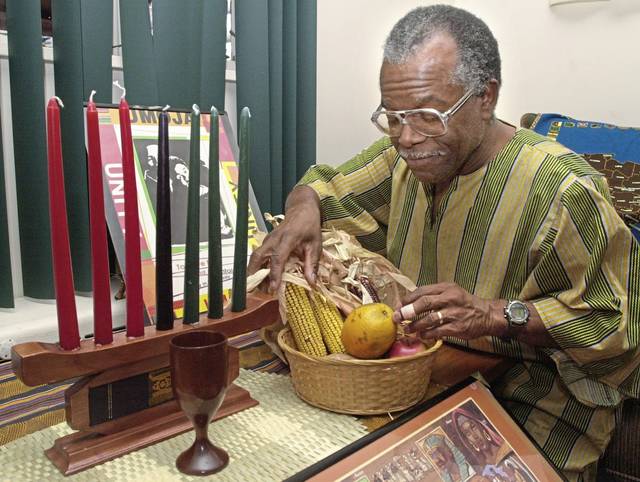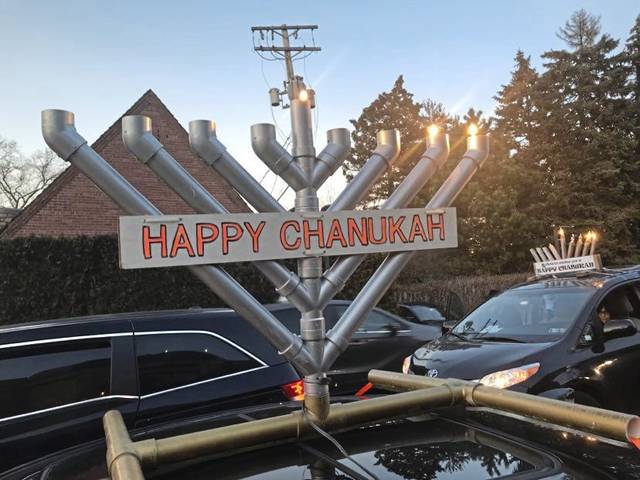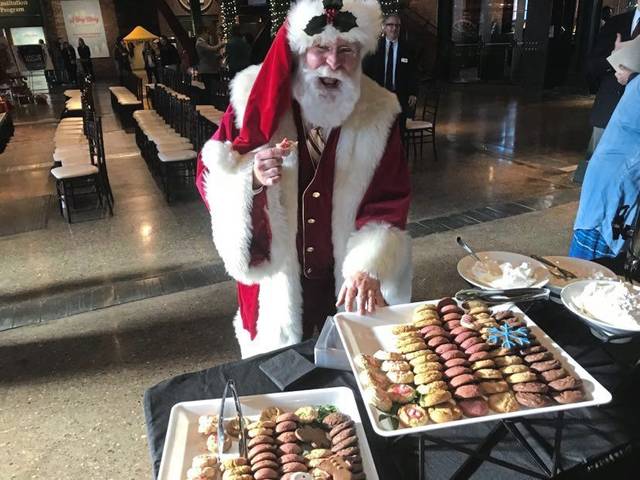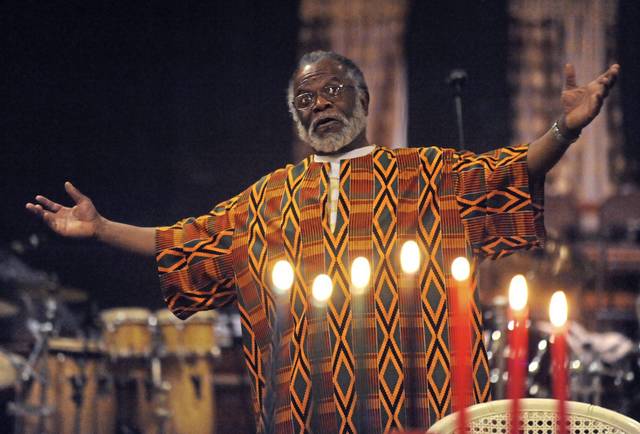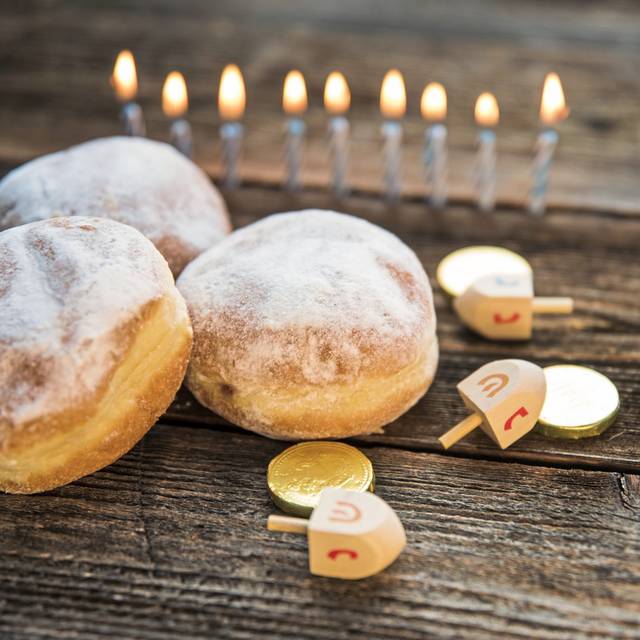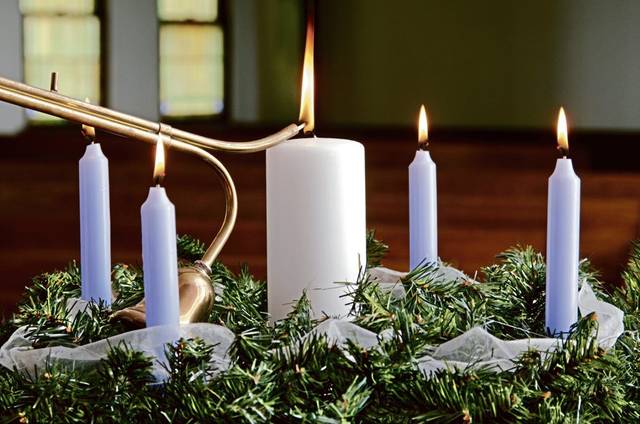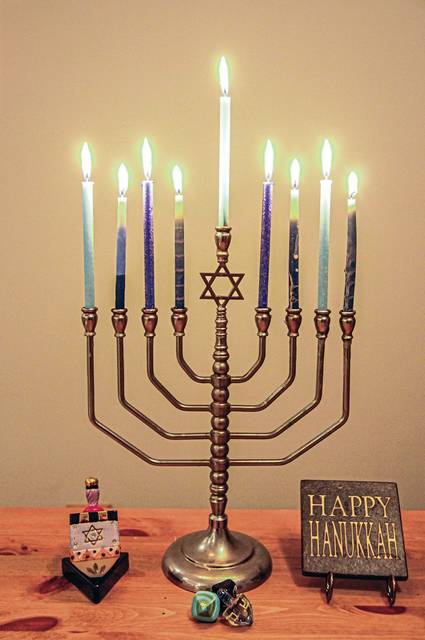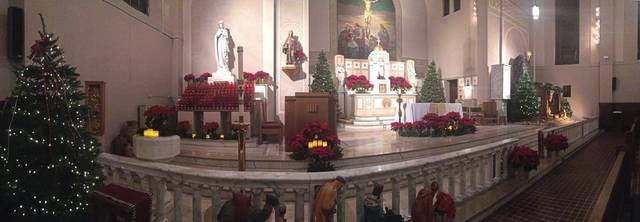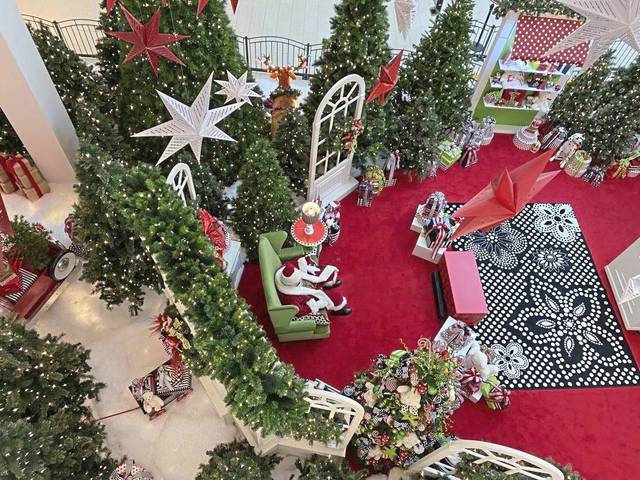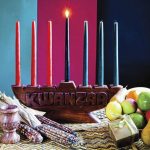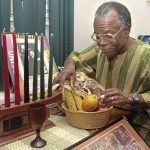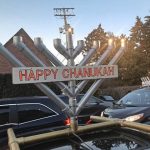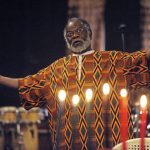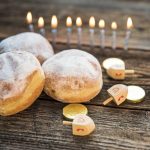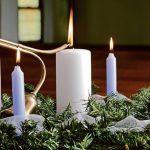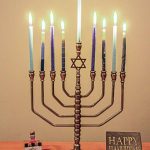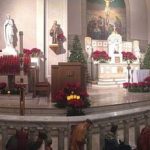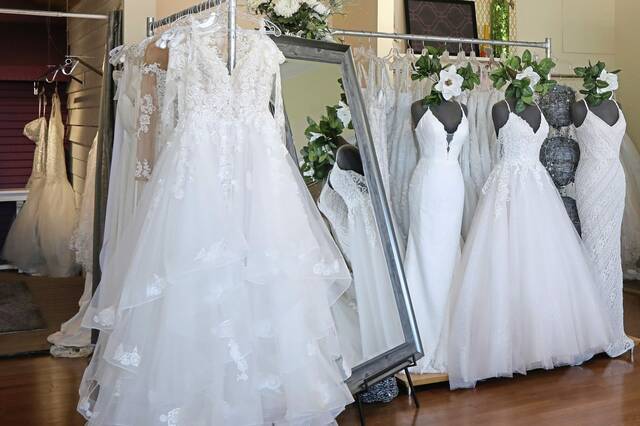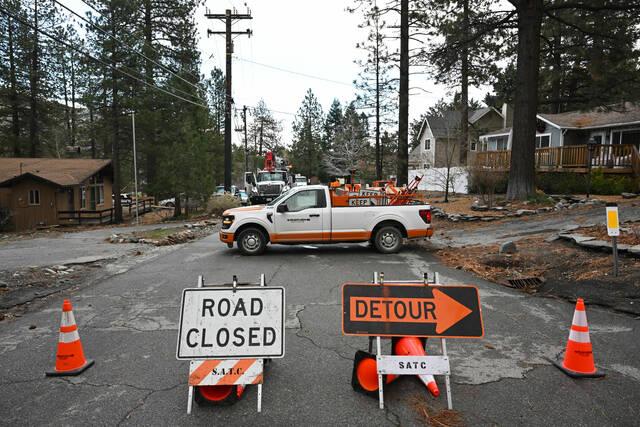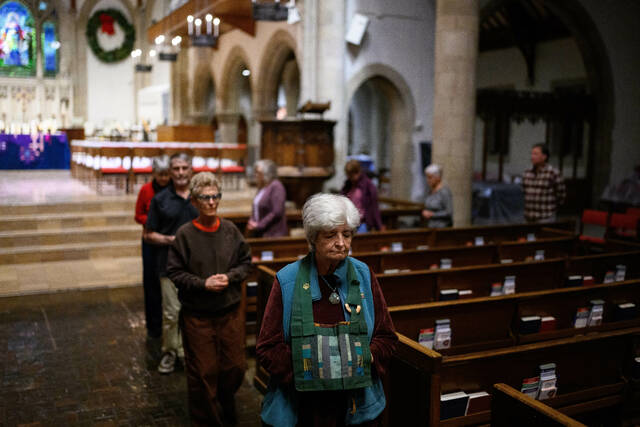They are the universal symbols of the holiday season.
Menorahs and dreidels, wreaths and trees, unity cups and bowls of fruit — all integral parts of Hanukkah, Christmas and Kwanzaa.
While each has its own customs and meanings and ways to celebrate, all three share one thing in common: light.
Hanukkah has its eight candles in the menorah. Christmas includes an Advent wreath with four candles. Kwanzaa is symbolized with seven candles.
Hanukkah
“Each day adds a little bit more of light,” said Rabbi Elchonon Friedman of Bnai Emunoh Chabad in Greenfield when talking about the menorah. “We need the light in this time of the year when it gets dark so early.”
This year, Hanukkah was celebrated Dec. 10-18.
The menorah lights signify the miracle of the oil in the darkness. The menorah is a symbol of when the Jewish people retook the temple of Jerusalem. They weren’t able to find the proper oil to light the menorah. The oil takes days to press. They found one jug and it lasted for eight days, said Friedman. They considered it a miracle.
So that’s why for each of eight nights an additional candle is lit until all are illuminated.
That miracle is also remembered in latkes, which are potato pancakes cooked in oil.
During Hanukkah, children often enjoy a game called dreidel, which is played with a four-sided top. It was played by the Jewish people who used to hide in secret caves to study the Bible, Friedman said.
“They would play this game where the dreidel gets spun from the top and spins on the bottom,” Friedman said. “We can think of it as, ‘is God reciprocating our love? Or is God spinning us reminding us of the miracle to overcome all types of odds?’ ”
Friedman said parents might give their children money during Hanukkah — some are real coins and others could be chocolate. It’s not about spoiling children, but about teaching them responsibility about currency, Friedman said. When you love someone, you give them things to help their growth, he said.
“It tells children we are proud of them and investing in them,” Friedman said. “It is their decision of what to do with it. Maybe they can keep part and spend it on something worthwhile and donate some to a charity.”
Each morning during Hanukkah, there is morning prayer called the Hallel, which comes from the word Hallelujah.
Christmas
Next time you see a Christmas tree, note that it is shaped in a triangle, which represents the father, the son and the Holy Spirit, said the Rev. Nick Vaskov, director of the Catholic Shrines of Pittsburgh and pastor of Christ Our Savior Parish on Pittsburgh’s North Side.
“It is also green during a time of year when most trees are bare because they’ve lost their leaves and any color,” said Vaskov. “The tree signifies a new life, the birth of Christ.”
He said when people add ornaments, they often revisit memories through the items they place on the tree and that a tree brings light and joy and peace to the home. Most people place trees near a window so other people can also share in the joy of the season, he said.
The tradition of giving presents at Christmas dates back to St. Nicholas, who as a bishop gave money to a family so a daughter could afford to get married. He would often fill children’s shoes with coins. He has since been known for giving gifts and sometimes sweets on his Dec. 6 feast day.
“We give gifts to the people we love and it is also nice to buy a gift for a person in need,” Vaskov said. “We buy things that people love to give them cheer. And this year, I imagine more people are buying gifts from locally owned businesses, which is wonderful.”
We definitely know Santa Claus is all about presents. He is also connected to St. Nicholas, Vaskov said.
“Santa Claus is a jolly man who creates a sense of wonder and joy,” said Vaskov. “Santa Claus unites us. He also represents the best in God who shared his most important present — his son throughout the world — the true gift of Christmas.”
The story of the birth of God’s son is seen in the Nativity. The Pittsburgh Creche, Downtown at U.S. Steel Tower, is the only authorized replica of the Nativity scene that St. John Paul II commissioned for the Vatican. In its 22nd year, it is an ecumenical effort by Catholic, Orthodox and Protestant Christians to preserve the true meaning of Christmas, standing as “a reminder of God’s great love for all his creation,” as described by the Catholic Diocese of Pittsburgh.
Seeing families and children enjoying the nativity and the parents explaining the birth of Jesus to youngsters is so beautiful, Vaskov said.
“The Pittsburgh Creche is a gift,” Vaskov said. “It is a tradition that goes back to St. Francis of Assisi, who taught about the birth of Christ. It is an image of what it was like to be there on the day Christ was born.”
The anticipation of that baby is symbolized in the Advent wreath.
There are four candles — three purple and one pink. Purple is the symbol of repentance and it is about preparing ourselves.
The pink represents Gaudete Sunday, the third Sunday of Advent, a day to rejoice that the Lord is near.
“I liken it to a mother awaiting the birth of her child,” Vaskov said. “There is excitement and joy. The light helps because the days are shorter and the light grows brighter the closer you get to Christmas.”
Many Orthodox Christians observe Christmas on Jan. 7, not Dec. 25, because they follow the Julian calendar for religious celebrations.
Kwanzaa
Kwanzaa was created in 1966 by Maulana Karenga, an activist and academic searching for ways to bring African Americans together after the Watts riots in Los Angeles. He researched African “first fruit” or harvest celebrations. Karenga combined aspects of several different harvest celebrations to form the basis of Kwanzaa, an African American and Pan-African holiday celebrated throughout the world, as described on the official Kwanzaa website. Karenga went on to become a professor and chair of Africana Studies at California State University in Long Beach.
The seven-day observance begins the day after Christmas, Dec. 26.
“It is a celebration,” said Rashad Byrdsong, co-founder of Community Empowerment Association in Homewood with his wife, Amargie Davis. “But it is not a religious holiday. It’s a cultural holiday celebrated by many religions. It’s all-welcoming celebration.”
Some of the signs of Kwanzaa include the Mkeka, which is a mat with a basket of fruit to symbolize the harvest and the African American celebration of families coming together — from elders to the children — after a successful harvest. You will often see Mazao, which are crops and can include Muhindi, an ear of corn placed next to a bowl of fruit on that mat, considered the foundation on which everything is built.
The Kikombe cha Umoja is the unity cup. You put water in the vessel and when you pour the liquid out you give thanks to ancestors by saying their names.
There are three red, three green and one black candle called Mishumaa Saba, the seven candles, in the Kinara, the candle holder. Marcus Garvey was a Jamaican-born Black nationalist and leader of the Pan-Africanism movement, who created the Kinara. He sought to unify and connect people of African descent worldwide. He was a civil rights activist who founded the Negro World newspaper, a shipping company called Black Star Line and the Universal Negro Improvement Association, or UNIA, a fraternal organization of black nationalists, according to history.com.
“The black candle represents the African American people,” Byrdsong said. “The green candles represent the native soil and the red the blood Black people have shed.”
The seven principles of Kwanzaa, such as unity and purpose, relate to the social and spiritual and physical development of people in the Black community, he said. Those principles are celebrated not only for those seven days but practiced all year long.
He and Davis hosted the first Pittsburgh Kwanzaa celebration in their home. It has since grown to be a much larger event. This year, because of the pandemic, it will still be observed but not in a community setting.
“Given what is going on in the country, we can still celebrate life,” Byrdsong said. “We can celebrate that we woke up this morning and have a roof over our heads. Kwanzaa is celebrated all year long and is founded in how we treat other human beings.”



